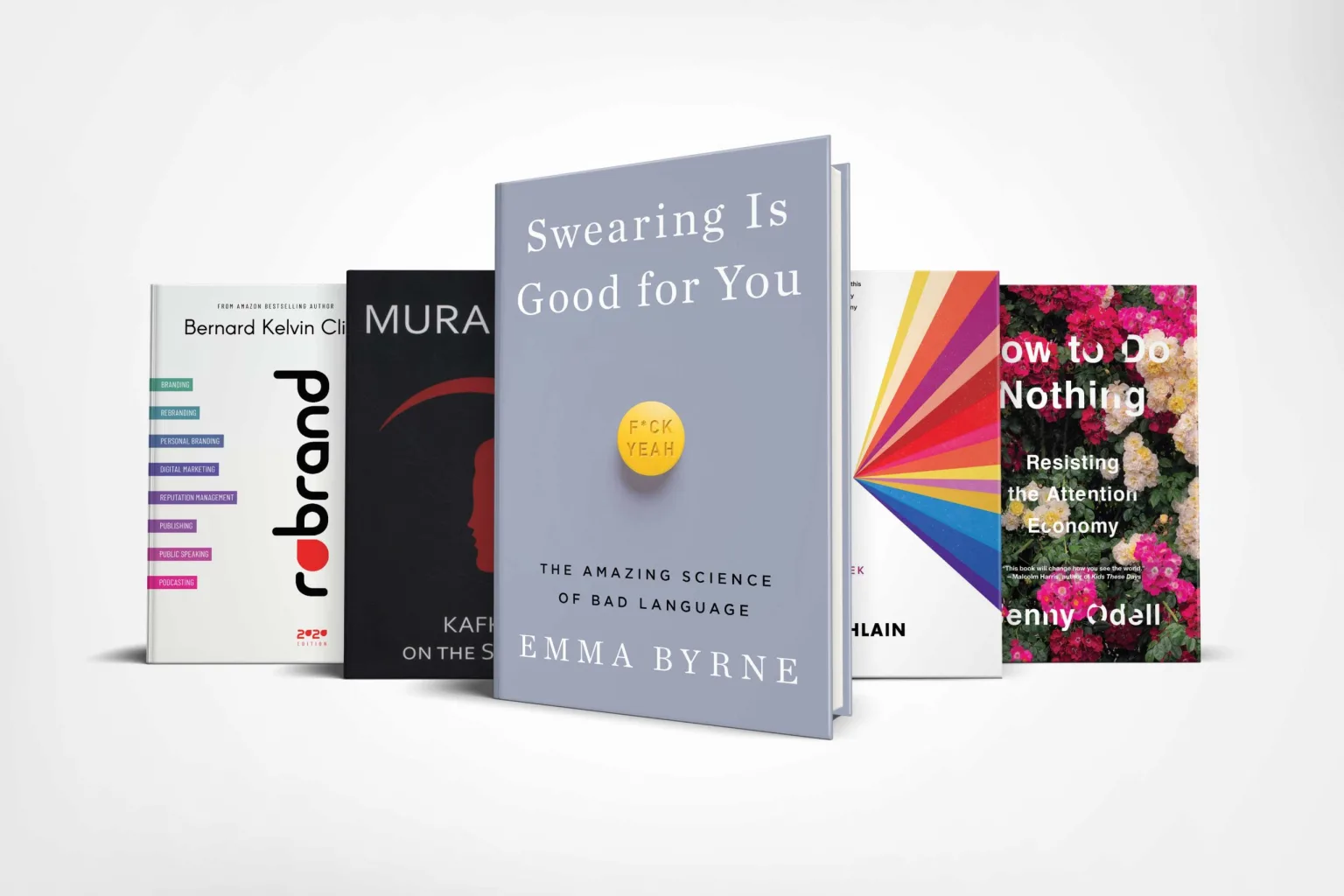My reading list has been conceived as a result of a design I did to encourage people to read in the coming year. If I were to get ahead of my pastor to christen the coming year, it will be the year of reading. I have always read, but starting in 2020, I want reading to be an integral part of my life as I expand my knowledge of my profession and other aspects of my life.
Here’s a list of the 12 books I intend to chew, swallow, digest, absolve and assimilate with the exception of Murakami’s Kafka on the Shore which will be for entertainment (you can say nourishment).
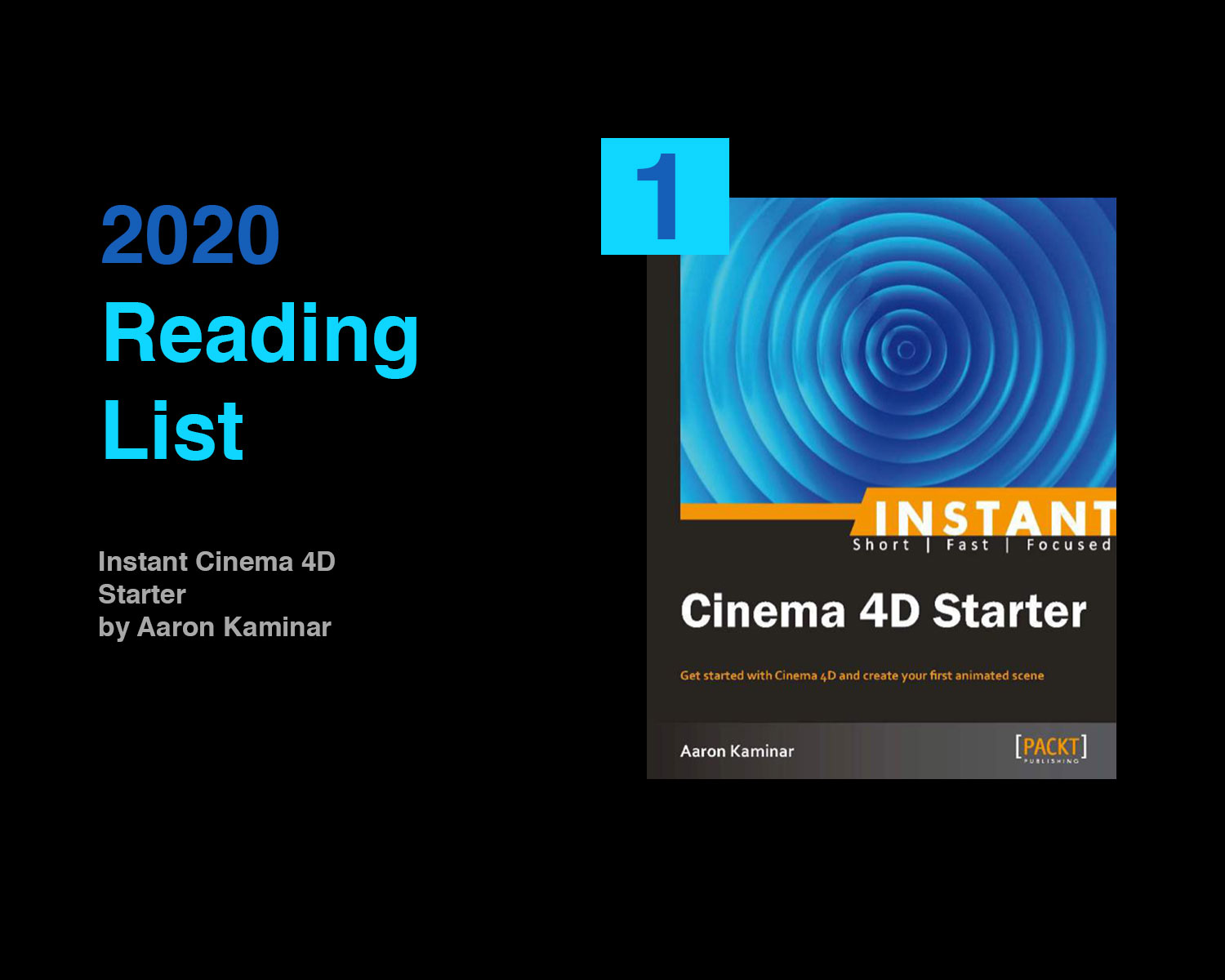
Instant Cinema 4D Starter is a book written by an experienced artist, for other artists. You will learn how to navigate the interface, and be given a basic understanding of how objects and hierarchies are structured in C4D. Then a step-by-step illustrated tutorial will teach you how to build a logo animation from the ground up.
The book provides a leg up for 3D artists that need to learn this powerful software. You will benefit from easy-to-understand instructions and informative illustrations. After being walked through the installation process, you will be taught the basics of navigating the C4D interface. This includes an overview of the different components of the interface, as well as some golden “rules to live by” that carry over throughout the entire application.
2. MAXON CINEMA 4D R20 Studio for Novices

The MAXON CINEMA 4D R20 Studio for Novices (Learn By Doing) textbook introduces the novice user to the CINEMA 4D R20 release of the famous software used by professional 3D artists to create impressive 3D scenes, visual effects, and broadcast artwork.
The book is structured in a pedagogical sequence that makes it very effective in learning the features and capabilities of the software. To make learning easy and effective, the author adopted a tutorial point-of-view and the learn-by-doing approach.
I can’t wait to start creating 3D objects in 2020.
3. After Effects for Designers
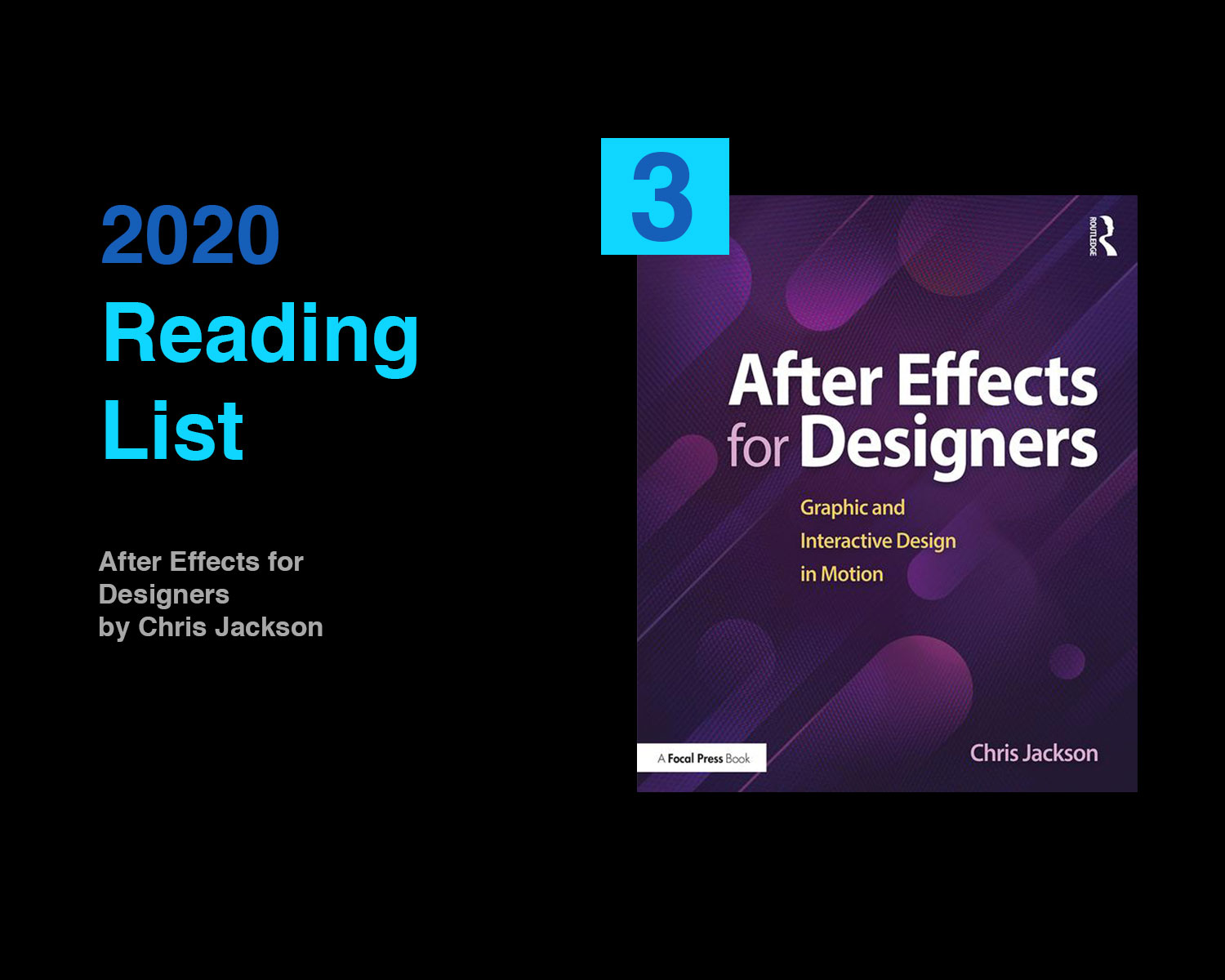
After Effects for Designers teaches design students, artists, and web, graphic, and interactive designers on how to design develop, and deploy motion design projects using Adobe After Effects. Author Chris Jackson balances fundamental aspects of time-based design with related techniques and explores the principles of animation; composition and layout; visual hierarchy; typography; cinematic storytelling; 3D modeling; compositing, and more. Each chapter contains unique, step-by-step project exercises that offer timesaving practical tips and hands-on design techniques, teaching readers how to effectively use the tools at their disposal in order to conceptualize and visualize creative solutions to their own motion design work. Readers will build professional-world examples in every chapter and, as a result, learn how to both design effectively using After Effects and practically apply these skills in client-based work.
An accompanying companion website includes complete project files for the book’s chapter exercises and additional video tutorials.
4. After Effects and Cinema 4D Lite
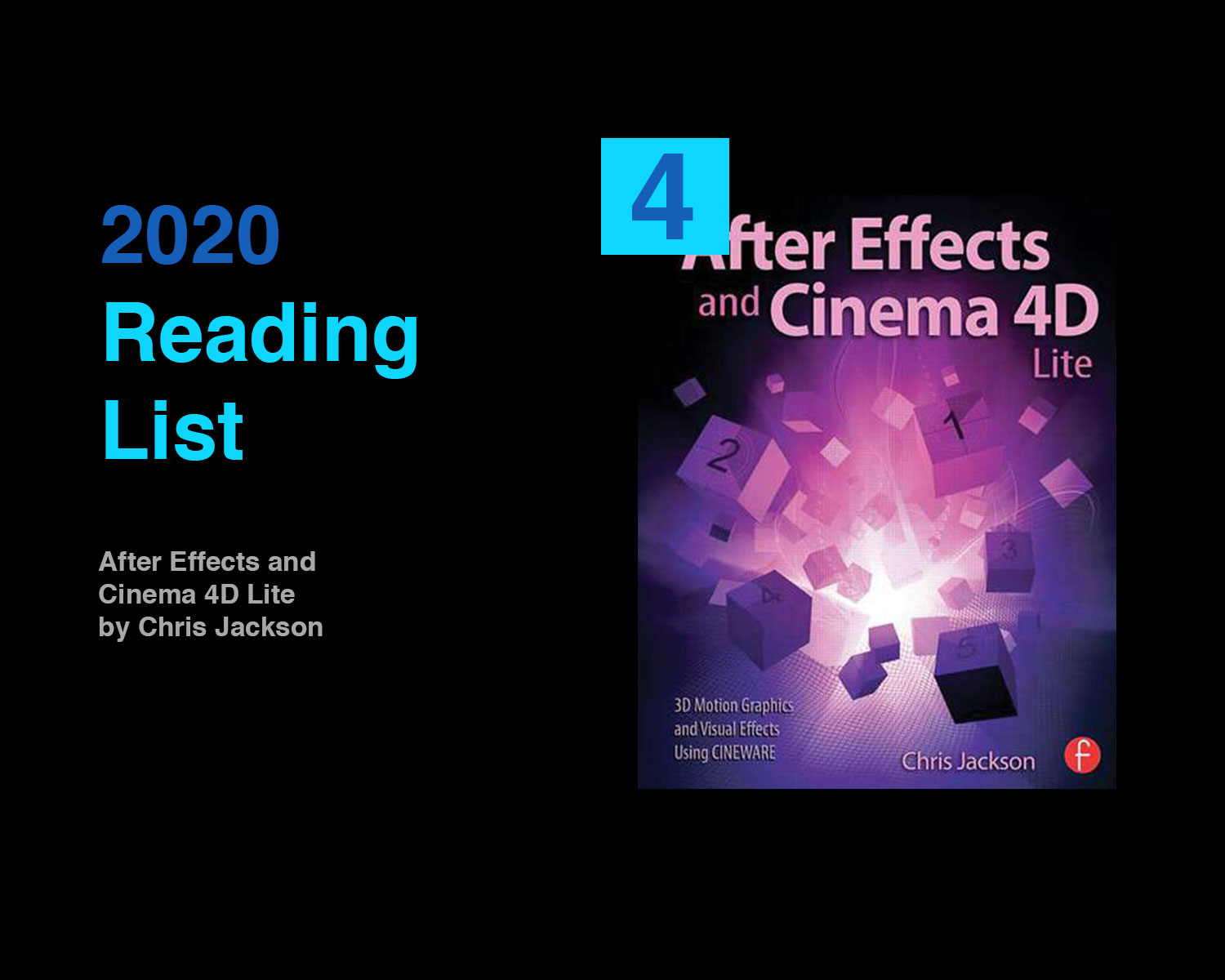
One of the most exciting new features in After Effects is the integration of Cinema 4D using the CINEWARE plug-in and a free version of Cinema 4D Lite. Both provide a wide assortment of new 3D tools and options that are difficult or nearly impossible to achieve in After Effects alone. This book clearly demonstrates how the new 3D workflow bridges the two applications together to raise the design bar for motion graphics and broadcast design.
Hands-on exercises teach you essential production skills including:
-
- Modeling in CINEMA 4D Lite
- Importing 3D models in After Effects
- Tracking 3D motion in After Effects
- Compositing with CINEWARE
- Using MoGraph features in CINEMA 4D
- Rendering and optimization techniques
Additional online materials include project files and videos showcasing the techniques covered in the book. To access these materials, please see the ‘eResources’ tab.
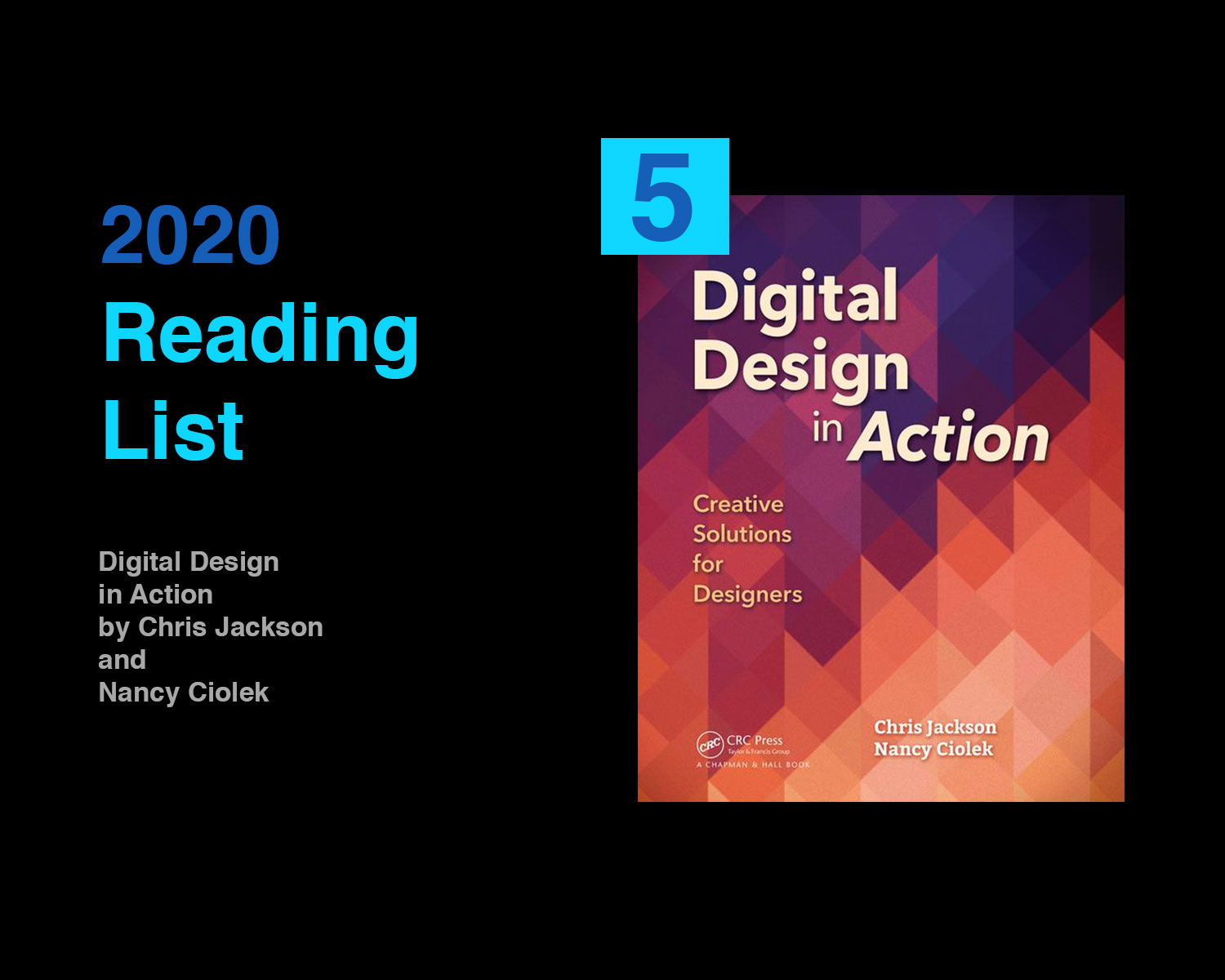
Digital design is not only about creating visually appealing products and promotions; it needs to possess a practical aspect in addition to being aesthetically appealing. Digital Design in Action explores these pragmatic applications and the creative design aspects for various mediums, including the web, apps, ePub, visual presentations, and PDF. Using the latest digital publishing tools and a project-based pedagogy, this book includes projects ranging from real-world to experimental. Each chapter contains the perfect balance of vibrant figures, techniques, and applications to help guide the reader into harnessing their inner potential.
Key Features
-
- Presents methodologies used to deploy layouts for multiple digital outputs, using the latest tools and techniques
- Includes a supporting companion website containing digital examples, plus all exercise files and supporting art
- Contains end-of-chapter exercises and real-world and experimental projects
- Structured to help design students create dynamic content in class and on the job later down the line.
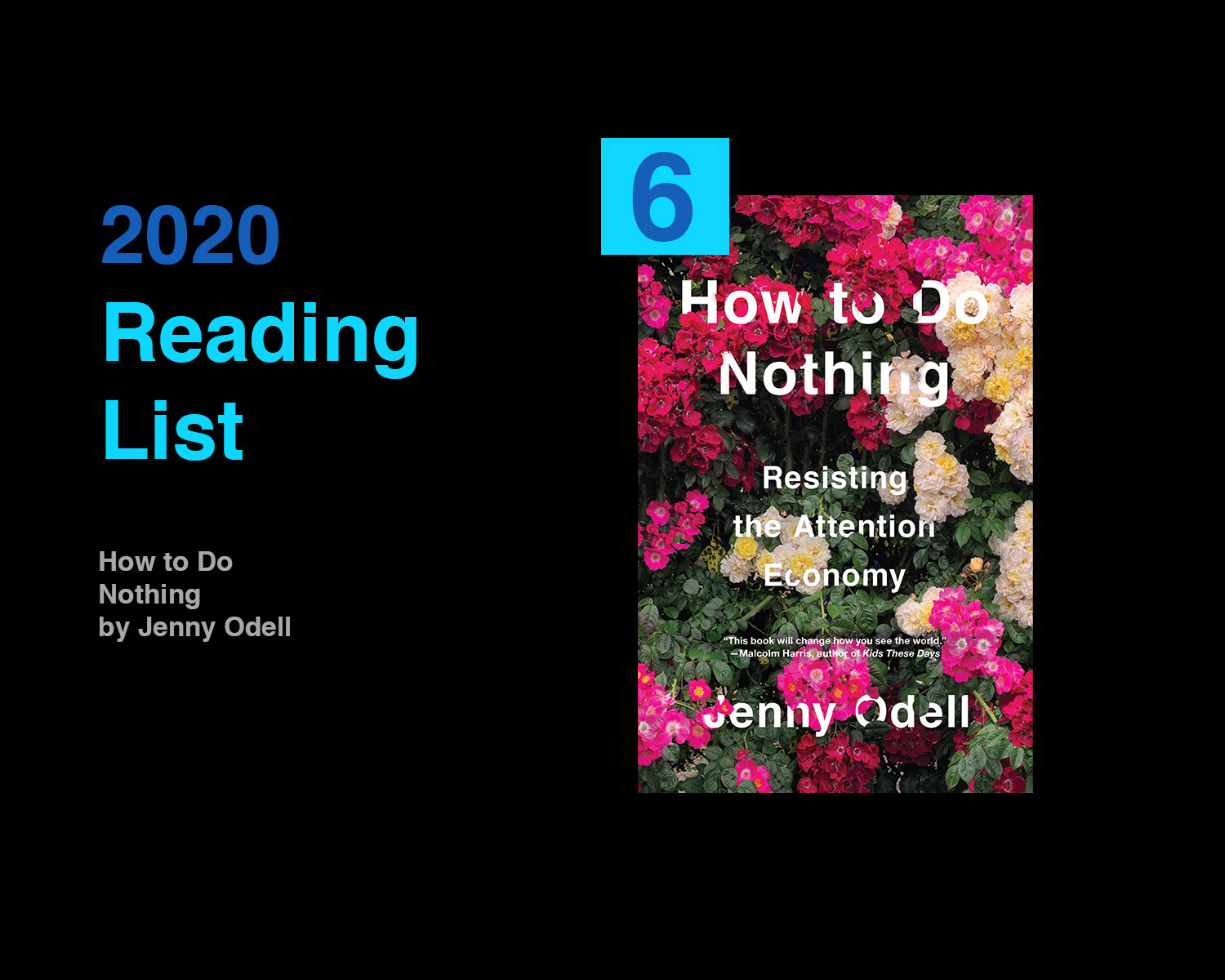
Nothing is harder to do these days than nothing. But in a world where our value is determined by our 24/7 data productivity . . . doing nothing may be our most important form of resistance.
So argues artist and critic Jenny Odell in this field guide to doing nothing (at least as capitalism defines it). Odell sees our attention as the most precious—and overdrawn—resource we have. Once we can start paying a new kind of attention, she writes, we can undertake bolder forms of political action, reimagine humankind’s role in the environment, and arrive at a more meaningful understanding of happiness and progress.
Far from the simple anti-technology screed, or the back-to-nature meditation we read so often, How to do Nothing is an action plan for thinking outside of capitalist narratives of efficiency and techno-determinism. Provocative, timely, and utterly persuasive, this book is a four-course meal in the age of Soylent.
7. The Age of Surveillance Capitalism

The challenges to humanity posed by the digital future, the first detailed examination of the unprecedented form of power called “surveillance capitalism,” and the quest by powerful corporations to predict and control our behavior.
In this masterwork of original thinking and research, Shoshana Zuboff provides startling insights into the phenomenon that she has named surveillance capitalism. The stakes could not be higher: a global architecture of behavior modification threatens human nature in the twenty-first century just as industrial capitalism disfigured the natural world in the twentieth.
Zuboff vividly brings to life the consequences as surveillance capitalism advances from Silicon Valley into every economic sector. Vast wealth and power are accumulated in ominous new “behavioral futures markets,” where predictions about our behavior are bought and sold, and the production of goods and services is subordinated to a new “means of behavioral modification.”
The threat has shifted from a totalitarian Big Brother state to a ubiquitous digital architecture: a “Big Other” operating in the interests of surveillance capital. Here is the crucible of an unprecedented form of power marked by extreme concentrations of knowledge and free from democratic oversight. Zuboff’s comprehensive and moving analysis lays bare the threats to twenty-first-century society: a controlled “hive” of total connection that seduces with promises of total certainty for maximum profit–at the expense of democracy, freedom, and our human future.
With little resistance from law or society, surveillance capitalism is on the verge of dominating the social order and shaping the digital future–if we let it.
8. Overwhelmed: How to Work, Love, and Play When No One Has the Time
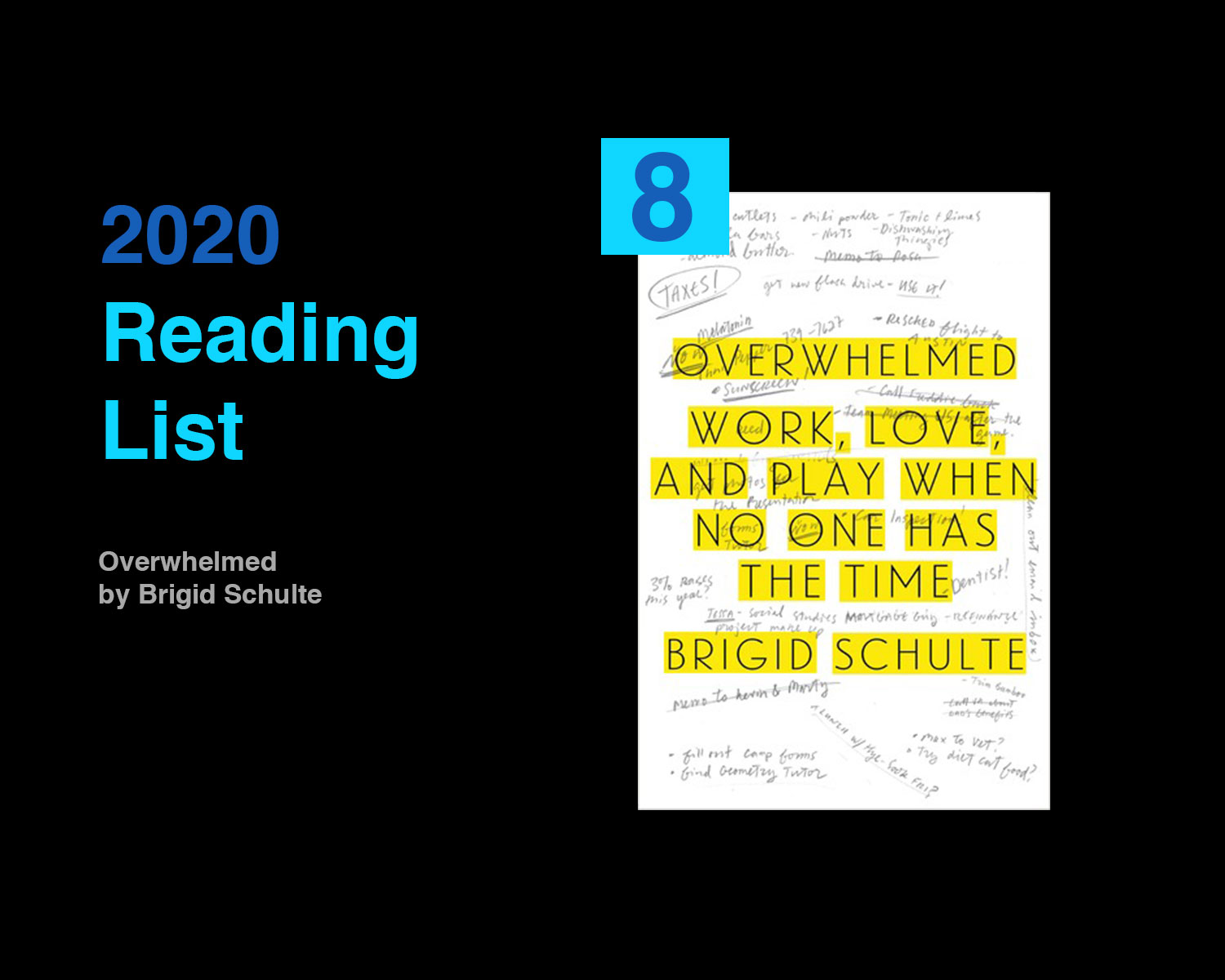
When award-winning journalist Brigid Schulte, a harried mother of two, realized she was living a life of all work and no play, she decided to find out why she felt so overwhelmed. This book is the story of what she discovered―and of how her search for answers became a journey toward a life of less stress and more leisure.
Schulte’s findings are illuminating, puzzling, and, at times, maddening: Being overwhelmed is even affecting the size of our brains. But she also encounters signs of real progress―evidence that what the ancient Greeks called “the good life” is attainable after all. Schulte talks to companies who are inventing a new kind of workplace; travels to countries where policies support office cultures that don’t equate shorter hours with laziness (and where people actually get more done); meets couples who have figured out how to share responsibilities. Enlivened by personal anecdotes, humor, and hope, Overwhelmed is a book about modern life―a revelation of the misguided beliefs and real stresses that have made leisure feel like a thing of the past, and of how we can find time for it in the present.
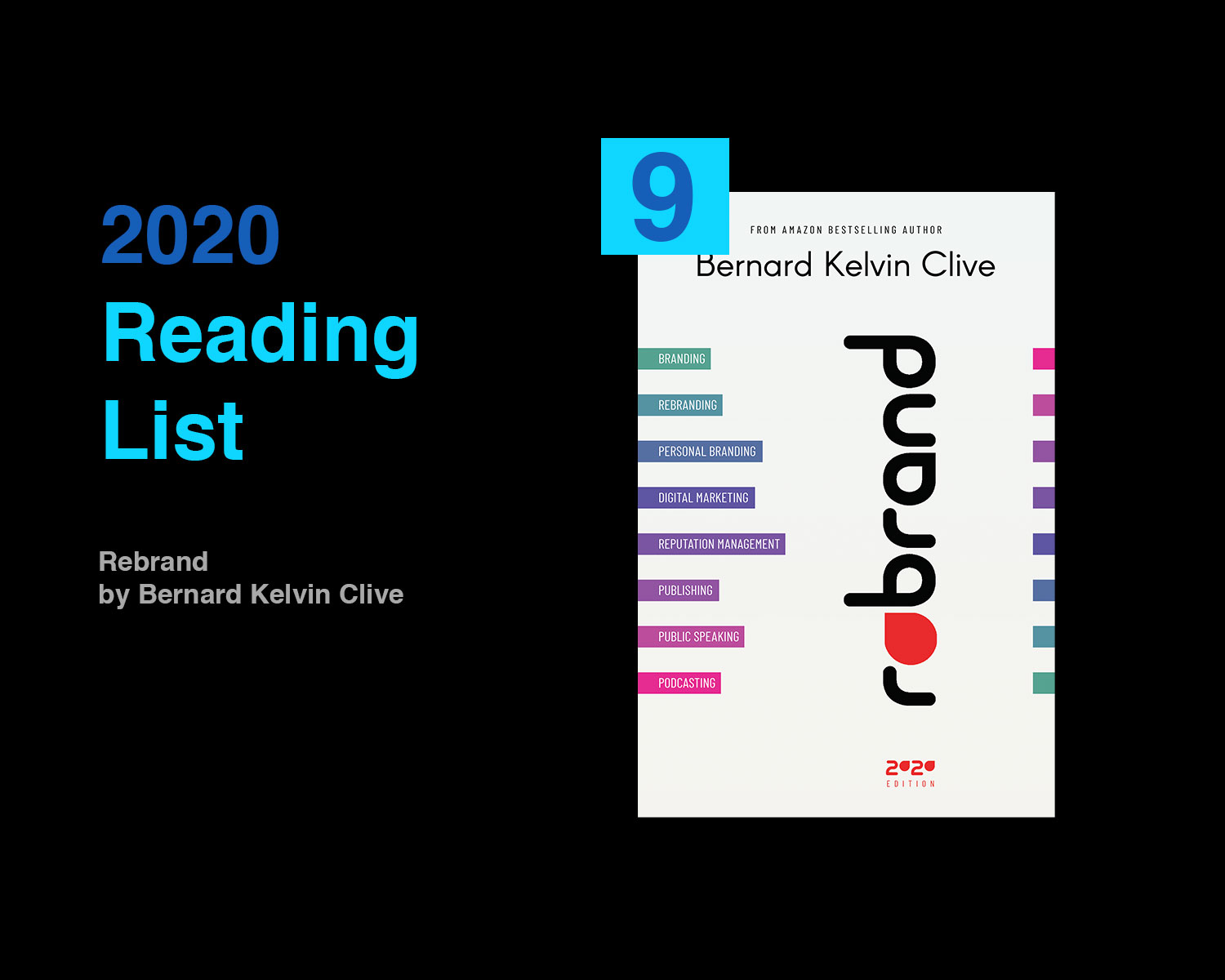
In the midst of this noisy and busy world if you don’t purposely decide to stand-out you will be drowned by competition. This book contains guidelines to help you build an authentic personal brand that will promote your product and services.
It’s about time to choose yourself and build a brand based on your passions and true purpose in life.
In this guide you will:
- Discover the Laws of Personal Branding.
- Personal Branding for Career Success.
- How to build a personal brand as a leader.
- How to use social media to position your brand successfully.
- A – Z Strategies for building a Personal Brand.
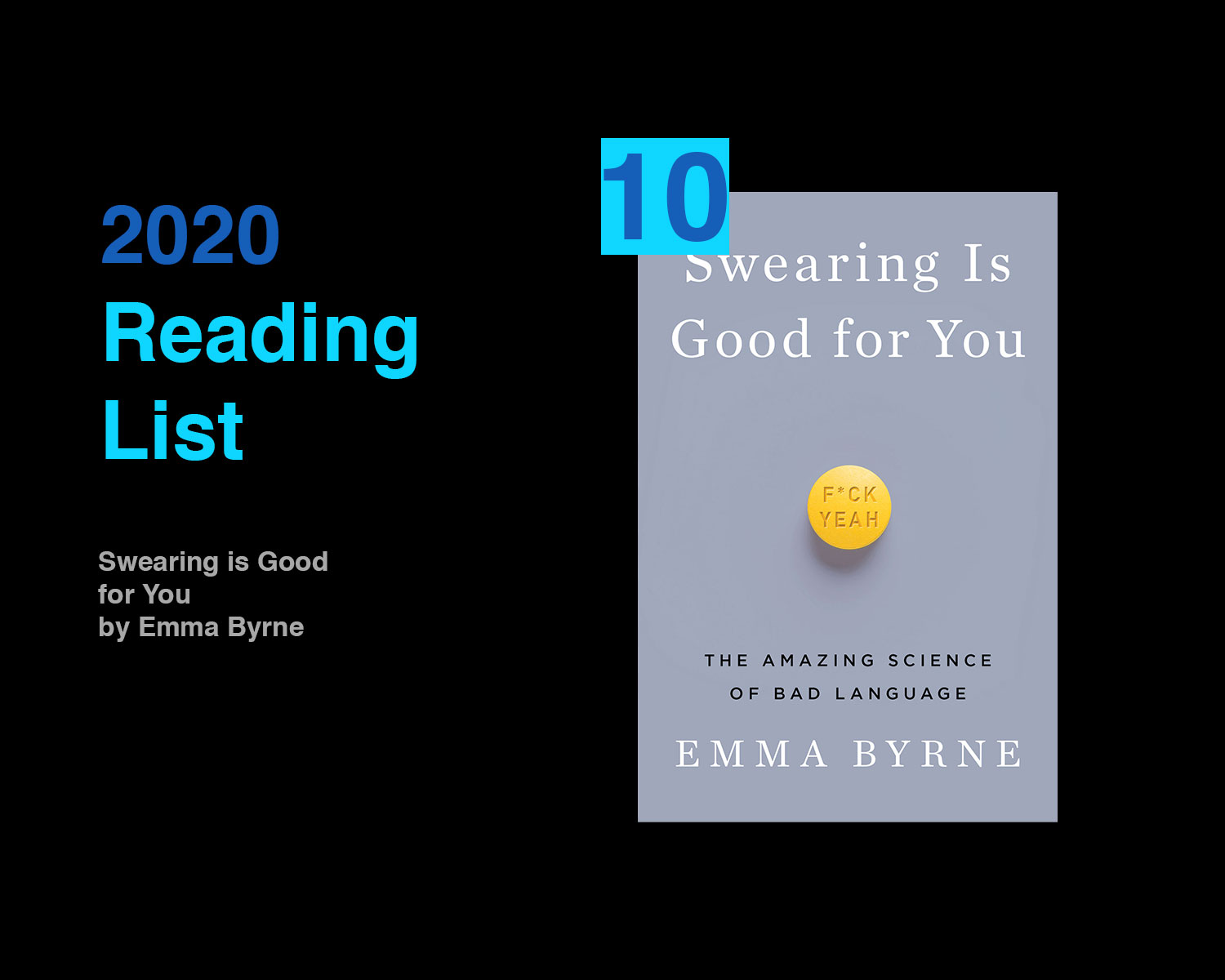
An irreverent and impeccably researched defense of our dirtiest words.
We’re often told that swearing is outrageous or even offensive, that it’s a sign of a stunted vocabulary or a limited intellect. Dictionaries have traditionally omitted it and parents forbid it. But the latest research by neuroscientists, psychologists, sociologists, and others has revealed that swear words, curses, and oaths―when used judiciously―can have surprising benefits.
In this sparkling debut work of popular science, Emma Byrne examines the latest research to show how swearing can be good for you. With humor and colorful language, she explores every angle of swearing―why we do it, how we do it, and what it tells us about ourselves. Not only has some form of swearing existed since the earliest humans began to communicate, but it has been shown to reduce physical pain, to lower anxiety, to prevent physical violence, to help trauma victims recover language, and to promote human cooperation. Taking readers on a whirlwind tour through scientific experiments, historical case studies, and cutting-edge research on language in both humans and other primates, Byrne defends cursing and demonstrates how much it can reveal about different cultures, their taboos, and their values.
Packed with the results of unlikely and often hilarious scientific studies―from the “ice-bucket test” for coping with pain to the connection between Tourette’s and swearing to a chimpanzee that curses at her handler in sign language―Swearing Is Good for You presents a lighthearted but convincing case for the foulmouthed.

Internet pioneer and renowned filmmaker, Tiffany Shlain takes us on a provocative and entertaining journey through time and technology, introducing a strategy for living in our 24/7 world: turning off all screens for twenty-four hours each week. This practice, which she’s done for nearly a decade with her husband and kids (sixteen and ten), has completely changed their lives, giving them more time, productivity, connection, and presence. She and her family call it “Technology Shabbat.”
Drawn from the ancient ritual of Shabbat, living 24/6 can work for anyone from any background. With humor and wisdom, Shlain shares her story, offers lessons she has learned and provides a blueprint for how to do it yourself. Along the way, she delves into the neuroscience, philosophy, psychology, and history of a weekly day of rest across cultures, making the case for why we need to bring this ritual back.
A compelling personal story and a fascinating, far-reaching examination of the complex world we’ve created, 24/6 is a call to rebalance ourselves and our society.
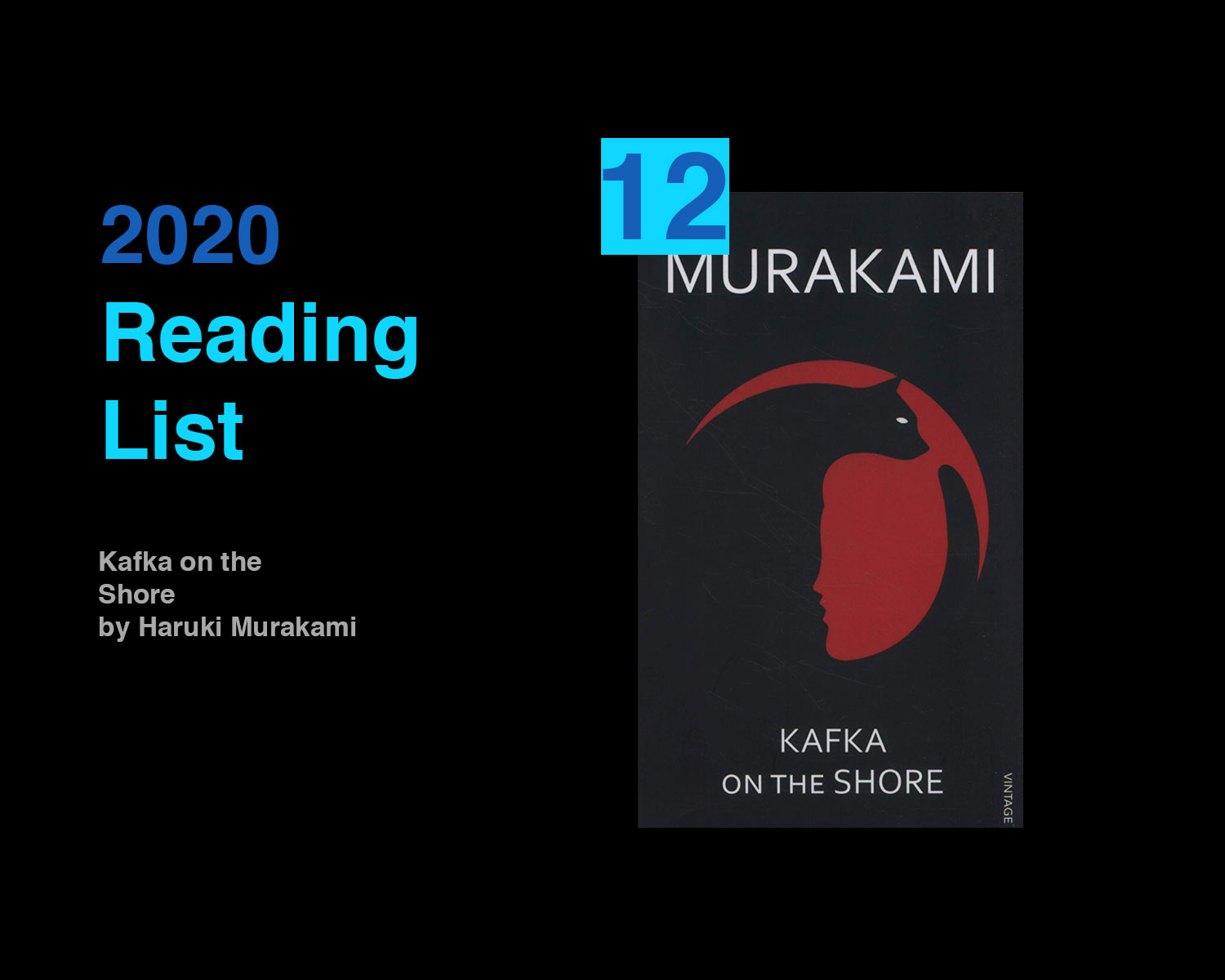
Kafka on the Shore follows the fortunes of two remarkable characters. Kafka Tamura runs away from home at fifteen, under the shadow of his father’s dark prophesy. The aging Nakata, a tracker of lost cats, who never recovered from a bizarre childhood affliction, finds his pleasantly simplified life suddenly turned upside down. Their parallel odysseys are enriched throughout by vivid accomplices and mesmerizing dramas. Cats converse with people; fish tumble from the sky; a ghostlike pimp deploys a Hegel-spouting girl of the night; a forest harbors soldiers apparently un-aged since WWII. There is a savage killing, but the identity of both victim and killer is a riddle. Murakami’s novel is at once a classic quest, but it is also a bold exploration of mythic and contemporary taboos, of patricide, of mother-love, of sister-love. Above all, it is entertainment of a very high order.
Happy new year people. Let’s make 2020 another exciting experience.
